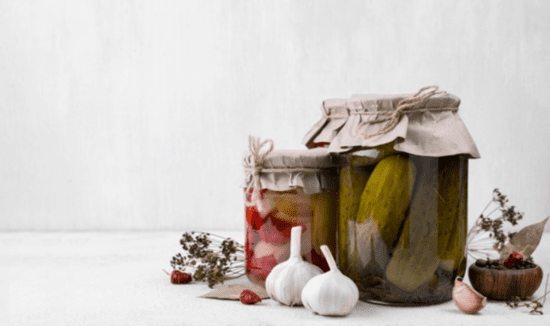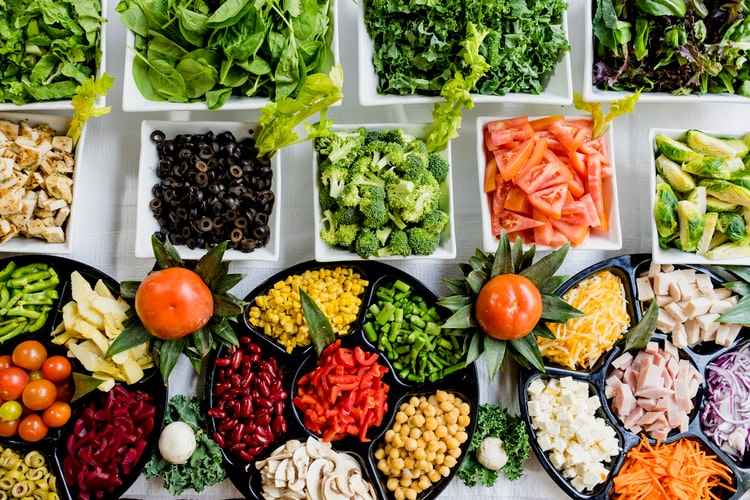We all know how essential food is for survival. Obtaining nutrients from healthy food helps us grow, develop, be active, and maintain healthy body functions, such as moving, playing, working, and thinking. We cannot live a healthy life without a balanced diet. Every food contains different nutrients that help us grow mentally and physically, such as carbohydrates, protein, vitamins, minerals, fats, etc.

Although everyone knows the importance of food for a living, the amount of food wasted every year is beyond imagination. For example, India wastes 67 million tonnes of food every year, the value of which is approximately 92,000 crores. To put it differently, the amount is enough to feed the entire population of Bihar for a year! And it is not just the case of one country, but almost every fast-developing or the developed country faces this challenge. If these numbers made you think, then you must understand what is the need for preserving food.
Learning courses for your kids! Get free trial here
Why is Food Preserved?
Preserving food can be very helpful in the following ways:
#1. The ultimate goal of food preservation is to prevent food from spoiling before consumption. Our food is contaminated with microorganisms that sometimes produce toxic substances. This results in food poisoning that is harmful to our health and can even be fatal.

#2. Saving money is also among the reasons why fresh foods should be preserved, whether from the garden, farm, or market. However, many variables impact the cost of home-preserved foods. Costs for processing and storing food include all supplies, equipment, fresh food, human energy, and fuel energy.
#3. Its environmental friendly aspects include the use of locally grown and seasonally-grown food, the reuse of preserving jars, and better food packaging and food miles.
#4. One of the main reasons for food preservation is to preserve surplus agricultural produce.
#5. It also avoids inappropriate planning in agriculture.
Different Methods of Food Preservation
#1. Preservation at Low Temperatures

Many foods are kept at low temperatures so that they can last longer. Foods stored at low temperatures exhibit a slower rate of physical and chemical reactions, which generally slows down the growth of microorganisms.
#2. Thermal Processing
The thermal processing of food involves combining temperature and time to kill as many microorganisms as possible. Following are the types of thermal processing:
Canning
Foods can be canned by processing and sealing them in air-tight containers (jars, steel cans, Mason jars). Typically, canned goods have a shelf life ranging from one to five years, although some circumstances allow them to last much longer. Canned freeze-dried lentils, for example, can last as long as 30 years when still edible.
Sterilisation
Sterilisation is the controlled heating process of eliminating living microorganisms from milk or food. The process can be accomplished using moist heat, dry heat, filtration, irradiation, or chemical methods.
Pasteurisation
This is the process of using heat to kill pathogenic (disease-producing) microorganisms, inactivate spoilage-causing enzymes, or reduce spoilage microorganisms in a food product. In contrast to the severe heat used in sterilisation, the relatively mild heat used in pasteurisation produces minimal changes in the nutritional properties of food.
Blanching
The process of blanching is mainly used for vegetable tissues before freezing, drying, or preserving them. Blanching vegetables, especially leafy vegetables, prevent microbial buildup and removes any trapped gases. It also makes them easier to process so that they can be put into containers. Furthermore, it inactivates enzymes that cause the deterioration of foods during storage.
Learning courses for your kids! Get free trial here
#3. Regulating Water Activity
The microbial contamination of food and the enzyme activity present in food containing a high concentration of water will generally cause it to deteriorate. Dehydration and the addition of solutes to foods can reduce or increase the water content of food. Both cases result in a decrease in water content and an increase in solute concentration in the food.
#4. Preservation Through Chemical
In certain conditions, chemical food preservatives either delay the growth of microorganisms without necessarily destroying them or prevent the deterioration of food quality during production and distribution. Some natural food constituents such as a small number of antioxidants retard or even prevent microbe growth when added to food.
#5. Fermentation and Pickling

Microorganisms usually cause spoilage. However, they can also be beneficial, causing oxidation or fermentation. Acidity, carbohydrates, oxygen, and temperature determine the growth of microorganisms in a food product and the changes they cause.
Other methods are irradiation, crystallisation, salting, processing of pulsed electric fields, biopreservation, ground burial and jugging.
Why Do We Need Different Methods to Preserve Food?

#1. Food has different properties; thus, the methods of preserving them can be different.
#2. Not every method is pocket-friendly. So, to make food preservation economical and safe, we need more flexible methods.
#3. People can preserve food according to their convenience. For example, if one does not have a refrigerator, they can opt for other methods like keeping things in an air-tight container.
Why Should We Preserve Food?
Preserving food does help the community not only globally but also individually. Here we discuss why do we need to preserve food for personal benefits:
#1. Reduction in Nutrients Loss
Controlled preserving techniques such as autoclaving, freezer drying, and controlled heat can better retain nutrients. Furthermore, vitamins are added to prevent nutrient loss due to processing. Several processed foods, like margarine and butter, are enriched with vitamins.
#2. Making the Shelf-life Longer
During preservation, apart from removing harmful matter, making sure the conditions are right and keeping the food outside the danger zone, several other steps are used to help prolong food’s shelf life.
#3. Removing Unwanted Substances From Food
Unwanted materials may be inedible, indigestible, or harmful to health, such as grain husks, the skins of some vegetables, coconut shells, etc. During the process of preserving food, all the unwanted parts of the food are removed.
#4. Keeping Food Safe for Consumption
A few foods contain natural toxins, including trypsin inhibitor in soya bean, mould toxin in groundnut and grains, infected materials, such as green potato parts that need to be removed, and chemical toxins that must be discarded. By removing toxins and using heat to enhance preservative microbial activity, food can be made safe. A safe preserving environment prevents contamination.
#5. Enhance the flavour, colour, and taste
Food’s acceptability depends on its taste. Processed food looks better and tastes better, with many techniques making it so. For example, miller reaction results in this browning crust that gives bakery items their baked flavour, aroma, and taste. Furthermore, various types of processing give food different flavours, including caramelisation, fermentation, etc.
Teach Your Kids More About Food Preservation with the Help Of Real school Of Montessori
We hope the answer to the question of what is the need for preserving food is clear to you now. Ask your kids to explain why we need to preserve food to know their views and boost their knowledge with this additional information. To get more learning materials for your kids, check out the free demo class of the Real School Of Montessori. Our fun learning environment provides all the guidance and instruction your child needs to become a problem solver, ready to face real-world challenges. Visit our website for more information on this unique online learning platform for kids.







